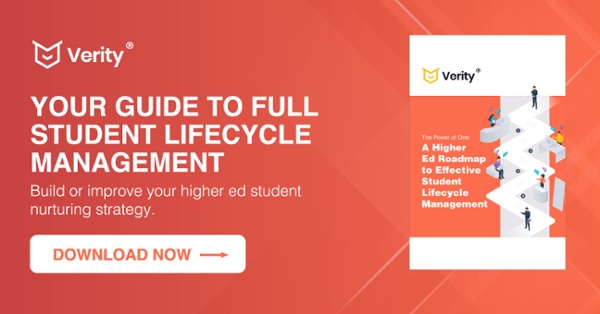Are You Providing a Stale Student Experience? Here's How to Tell
With college enrollment dropping for the second year in a row, competition has never been stronger among Higher Ed institutions.
Because of this, schools around the country are working fiercely to provide the best possible student experience and market those unique intangibles to their prospects.
Schools that aren’t taking a hard look at the student experience they’re providing and making effective changes run the risk of falling behind their competitors and seeing their own enrollment numbers drop.
But what exactly is a stale student experience, and how can you tell if your school is providing one?
Here are a few indicators.
You’re Not Focusing Enough on the Students
Of course, you care deeply about your students and you want to provide them with the best possible experience at your school.
So, what exactly do we mean by this?
Too many Higher Ed professionals, when they’re planning events, writing copy, and organizing campaigns, focus excessively on what they need from their students: attend this event, meet that deadline, fill out these forms, etc…
It’s not that these things aren’t important—they are—but if they become your first priority, then it will become evident in the way that students interact with your programs. Instead, focus more on the outcome of the students and what’s in it for them. What do they get out of what you’re asking them to do, and how can you make it easier for them to do so?
Make sure you’re focusing primarily on the students, especially when it comes to helping them with their career options after college.
Ask yourself this: what campus activities are happening right now that are preparing students for beginning their careers? How accessible is the career services office? Is there any sort of student mentorship? Do students know about it and how easy is it to sign up?
Your answers to these questions will indicate how highly you’re prioritizing your students.
You’re Not Leveraging Multi-Channel Communication
We know that everybody has different preferred methods of communication, so it’s important to build a strong multichannel communication strategy that includes:
- Phone
- Text
- Chat
- Video
Most schools are already well-equipped when it comes to email and phone communications, but what about the others?
Chat is one of the more underutilized channels in Higher Ed, even with today’s expectation of instant communication. Give your students and prospects the opportunity for quick responses and less complicated interactions by including a thoughtfully-built chat option in your communication strategy.

We also know that texting prospective students is especially effective with Generation Z. In fact, SMS text messages have a 98% open rate, compared to 20% for emails.
So, having a texting strategy in place can not only help students feel more engaged with your school, but it’ll also help you deliver high-value conversations that lead to the results you need.
That said, it’s important to understand that texting as a standalone channel is not enough. Texting needs to be incorporated into a large communication strategy that includes multiple channels, announcements, reminders, and personalized touches.
You Don’t Have a Paperless Campus
Are there digital records of important documents, or does the student need to provide the same information again and again?
Having to repeat themselves in every interaction will only create frustration among your students. That’s why it’s so beneficial to have a paperless campus and a CRM that can manage all of your documents, student records, and communications.
Going paperless is key, but don’t be the school that asks students to log into a different portal every time they want to look at:
- Grades
- Transcripts
- Schedules
- Course registration and enrollment
- Payments
- Documents
That’s where having an all-in-one platform is key. A good document management solution helps both you and your students access important information in a secure and user-friendly way.
You’re Overcommunicating to Your Students
This is one of the most common mistakes that Higher Ed professionals make. If you send out an email, alert, notification, or text for every single piece of news you have to share, all you’re doing is overcommunicating. When that happens, it’s harder and harder for students to cut through the clutter to figure out what’s important to them, and this can really hold back college student engagement on your campus.
Can your students tell which communications are important? Are you blasting all sorts of important, news, and deadline information in the same manner as announcements as on-campus events?

If you are, chances are that your students may be ignoring your communications because they’re already so busy and they don’t know what’s actually worth their limited time and attention.
It’s important to strike a balance between communicating too much and not communicating enough. What should you say and when should you say it?
This guide will help you feel confident building a communication strategy and will even provide some useable templates to help you get started.
You Don’t Use Trigger Events and Proactive Communication
One of the best things a school can do for its students is to anticipate their needs and build proactive solutions for them.
What are the recurring challenges your student population faces? How can you help solve them?
Think about things like when they stop attending class, when their grades drop, or if they miss an academic advisor appointment. What happens? Who’s notified so that the student can be checked in on to see if they need help?
You can automate these processes and responses, whether it’s a quick alert to the student, a task for a staff member, or an item on their contact record. By being proactive about these things, you’ll build better relationships with your students and show how much you care about their success and wellbeing.


